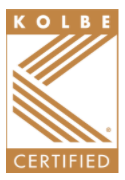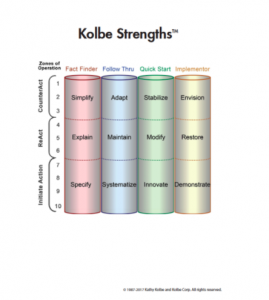We’ve all been a part of that group project. You know, the project where one person takes the lead, leading some members to conclude their ideas are unwelcome, while a select few ride the others’ coattails.
This is what school nightmares are made of. And we can carry these bad experiences into the workplace.
These ‘teams’ were usually thrown together by luck of the draw or teacher’s choice, with little thought or intention put into their structure. It’s no wonder they didn’t work.
Conversely, business teams are created with intention, and at least a solid hiring process for talent. But they can still feel like those nightmare group projects.
And yet, something incredible happens when teamwork happens the way it’s supposed to happen. Things change when everyone on the team is equally invested in the overall purpose and goal. You find yourself working faster, finding mistakes more easily, and innovating better.
Ultimately, you reach a point where you’re certain each person on your team has your back — and both your job satisfaction and performance skyrocket.
“Talent wins games, but teamwork and intelligence win championships.” — Michael Jordan
But HOW do you create teamwork and collaboration in your organization?
What are the symptoms of poor teamwork and collaboration? Lack of engagement, burnout, absenteeism and turnover. Group conflict, no momentum or inertia, members working against their strengths.
We know there are two factors for sustainable success: Efficiency and Productivity.
At Priority VA, we are Kolbe Certified™ Consultants. We use the Kolbe System™ to assess teams and identify the solutions that will lead teams to sustainable success.
First, let’s talk about Efficiency.
Efficiency
Efficiency, in this sense, is conative stress – stress in the way you naturally take action in the workplace. Efficiency, or lack thereof, can be individual or collective. When we speak of efficiency this way, we are asking how a team member has job fit.
We start by evaluating Job Fit using the Koble A™, B™, and C™ Indexes.
The first step in the Kolbe System is to determine a person’s instinctive traits. This is done with the Kolbe A™ Index. The four-number Index result identifies an individual’s natural tendencies in each Action Mode® and determines their modus operandi or MO. The numerical values indicate how a person uses their instincts to prevent problems, respond to opportunities and initiate solutions.
It is important to note that a short line in an Action Mode does not mean a deficiency. Koble identifies 12 strengths, three in each Action Mode.

Next is the Kolbe B™ Index. It is taken by the person performing the job role. This index identifies a person’s job-related self-expectations.
Third is the Kolbe C Index. It identifies the characteristics a supervisor requires for success in a specific job.
These three indexes combined can help identify if there is job fit or strain.
Strain is identified as the difference between how the person naturally solves problems versus what they think is expected of them in their role (Kolbe A™ results vs. Kolbe B™ results). Symptoms of strain are uneven workload, lack of engagement, burnout, absenteeism and turnover.
When Team Strain is present there is a solution. Using tools, we can:
- Validate strengths of the individuals,
- Identify contributions to the team, as well as
- Coach so that each team member is using their strengths effectively.
Tension is another issue that contributes to Efficiency. Tension between a team member and supervisor occurs when there is a significant gap between how the supervisor believes a job needs to be done and the way the person in the role naturally approaches doing it. Tension can show up as management expectations unmet, additional management focus and micromanagement and turnover.
Luckily, there are lots of ways to address tension. We can:
- Redefine roles in more cognitively realistic ways,
- Train management on providing options in methods,
- Check for leaders’ bias and
- Find necessary talents to fill job roles.
Productivity
Productivity relates to conative diversity of a team. This sense of productivity relates to team fit, how the different strengths of the team work together.
There are three types of teams.
Collaborative, where members work interdependently and success depends on others’ performance.
Independent, where individual contributors come together for reporting purposes.
Hybrid, where members work both interactively and independently.
The goal of all teams should be synergy. Synergy happens when the productivity of the team is greater than productivity of individuals working independently. The source of productivity problems is an imbalance in conative energy.
Research shows that Collaborative and Hybrid Teams with ideal synergy:
- Get more done in less time
- Achieve more with fewer people and
- Need fewer financial and other resources
The most common productivity issues are too much of the same energy (conative cloning), not enough of any giving strength (missing methods) and group conflict (polarization).
As Certified Kolbe Consultants, we use the appropriate tools and reports to identify the problems in efficiency and productivity for our clients.
If you’re ready to see what Priority VA and the Kolbe System can do for your business, schedule a Free Strategy Call today.
Trademarks and registered trademarks are the property of Kathy Kolbe and Kolbe Corp. All rights reserved. Used herein with permission.





